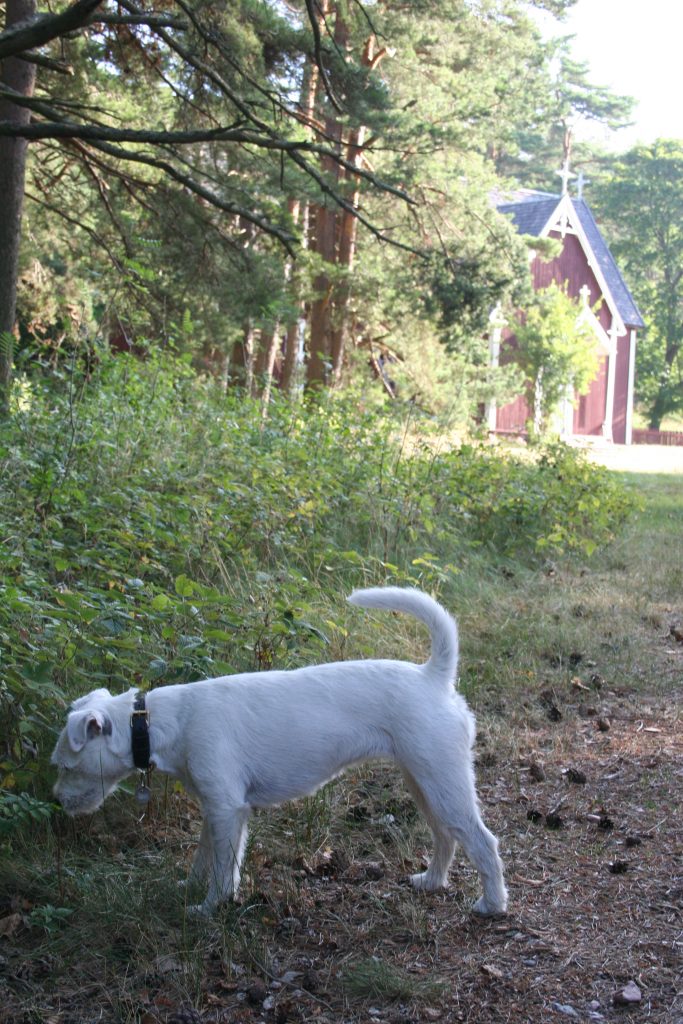To the general public, the island of Seili is perhaps most famous for its 350-years long history as a leprosy and mental hospital island. The colorful stories and faiths of patients intrigue, horrify and feed visitors imaginations. The history of Seili has also been a central part of our activities. Throughout the years, several scientific publications and thesis’s have been conducted on the topic together with other departments within and outside the University. In an inherent way, the history and nature of the Seili island have made the Archipelago Research Institute into a multidisciplinary environment where humanists, natural scientists, and artists can meet and work closely together.

Not only natural science. The colorful past of the island interests e.g. historians and gender researchers. Photo : Milla Airosalmi.
To showcase this side of our activity, here we will post a synopsis of a blog post that was published in the museum church project’s blog in 2016 by Milla Airosalmi, a former church guide of ours. For those interested in knowing more details about the history of Seili, we recommend taking a scroll down the museum church project’s blog! Due to the recent organisational changes at our Institute, the blog is no longer updated but several stories and research information can be found from its archives!
Search for the lepers
At the end of July 2016, something odd was happening next to the museum church – several people and a dog were exploring the church grounds and digging test pits. The activity was part of a 4-day international workshop and seminar called Archaeogenetics in the Archipelago, which aim was to bring together archaeologists, geneticists, affiliates and other interested parties.

Archaeologists at Kirkkoniemi in July 2016. Behind is the museum church, built in 1733. Photo : Taina Niemi.
The excavations at the church garden were lead by Petro Pesonen, an archaeologist working in the Finnish National Board of Antiques, who also kindly provided us with some information about the project to share with you today.
The excavations had two goals: 1. To find a missing graveyard, containing leprosy patients’ remains and take some samples for leprosy bacteria analyses. The 2. aim was to train a Parson Russell Terrier called Hekla to locate buried human bones by scent. Using dogs in archaeology sites has become quite common as any breed can be trained as one. In Finland, however, this is still relatively rare.

Finland’s first archaeology dog ready for action. Photo: Taina Niemi.
In addition to an archaeology dog, the researchers also relied on a terminal ground resistance tester, which determines soil conductivity and, thereby, provides insight into depositions, and underground structures. In this project, the use of this device and genetic methods and the expertise of researchers (bioarchaeologists) was especially important as archaeology dogs cannot tell the difference between leper and non-leper graves.

The remains of mental hospital patients, staff, and their offspring are buried in the graveyard, located behind the museum church. Photo: Lisa Svanfeldt-Winter
Alas, the leper’s burial site was not found. According to a local tale, the graveyard should be found from a meadow, located behind the memorial cross, mounted in the 1980s. However, this is most likely not true as the meadow is too clayey and low-lying for a graveyard. A more probable location for the graveyard is below the church, which is probably the reason why the location of the burial site has remained a mystery to this day. Nevertheless, the excavations were not a total loss as other interesting discoveries were made, for example some household artifacts from the 17th and 18th century, indicating that one of the lepers’ building had burned down at some point. The second aim was also fulfilled as Hekla received a lot of valuable training. The project continues and perhaps, Hekla and her human colleagues will return to Seili and the search for the lepers’ resting place will continue..

Seili is a place where colorful history and diverse natural environments meet.
Student! Interested in working and writing your thesis in Seili? The Archipelago Research Institute’s Seili-fund provides funding to students working with archipelago and Seili-related topics. Contact us for more information!


Leave a Reply